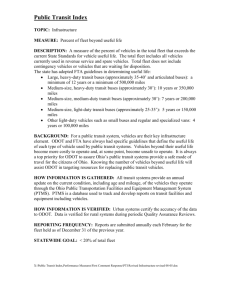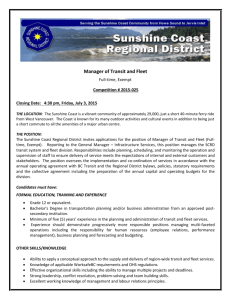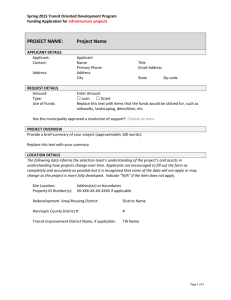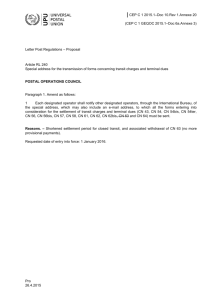TOPIC: Infrastructure
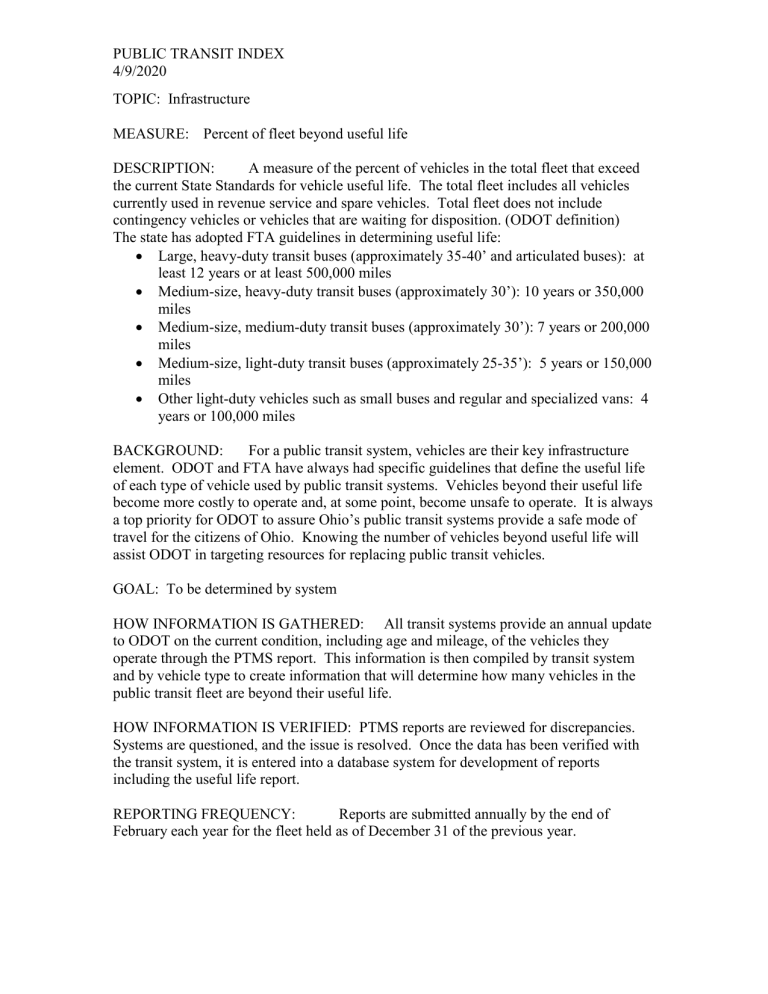
PUBLIC TRANSIT INDEX
4/9/2020
TOPIC: Infrastructure
MEASURE: Percent of fleet beyond useful life
DESCRIPTION: A measure of the percent of vehicles in the total fleet that exceed the current State Standards for vehicle useful life. The total fleet includes all vehicles currently used in revenue service and spare vehicles. Total fleet does not include contingency vehicles or vehicles that are waiting for disposition. (ODOT definition)
The state has adopted FTA guidelines in determining useful life:
Large, heavy-duty transit buses (approximately 35-40’ and articulated buses): at least 12 years or at least 500,000 miles
Medium-size, heavy-duty transit buses (approximately 30’): 10 years or 350,000 miles
Medium-size, medium-duty transit buses (approximately 30’): 7 years or 200,000 miles
Medium-size, light-duty transit buses (approximately 25-35’): 5 years or 150,000 miles
Other light-duty vehicles such as small buses and regular and specialized vans: 4 years or 100,000 miles
BACKGROUND: For a public transit system, vehicles are their key infrastructure element. ODOT and FTA have always had specific guidelines that define the useful life of each type of vehicle used by public transit systems. Vehicles beyond their useful life become more costly to operate and, at some point, become unsafe to operate. It is always a top priority for ODOT to assure Ohio’s public transit systems provide a safe mode of travel for the citizens of Ohio. Knowing the number of vehicles beyond useful life will assist ODOT in targeting resources for replacing public transit vehicles.
GOAL: To be determined by system
HOW INFORMATION IS GATHERED: All transit systems provide an annual update to ODOT on the current condition, including age and mileage, of the vehicles they operate through the PTMS report. This information is then compiled by transit system and by vehicle type to create information that will determine how many vehicles in the public transit fleet are beyond their useful life.
HOW INFORMATION IS VERIFIED: PTMS reports are reviewed for discrepancies.
Systems are questioned, and the issue is resolved. Once the data has been verified with the transit system, it is entered into a database system for development of reports including the useful life report.
REPORTING FREQUENCY: Reports are submitted annually by the end of
February each year for the fleet held as of December 31 of the previous year.
PUBLIC TRANSIT INDEX
4/9/2020
STATEWIDE ORGANIZATIONAL SCALE:
< 5%
5%-20%
20.01%-40%
40.01%-60%
60.01%-80%
80.01%-100%
X:\Public Transit Index,Performance Measures\First Comment Response\PTI Revised
Infrastructure.doc
